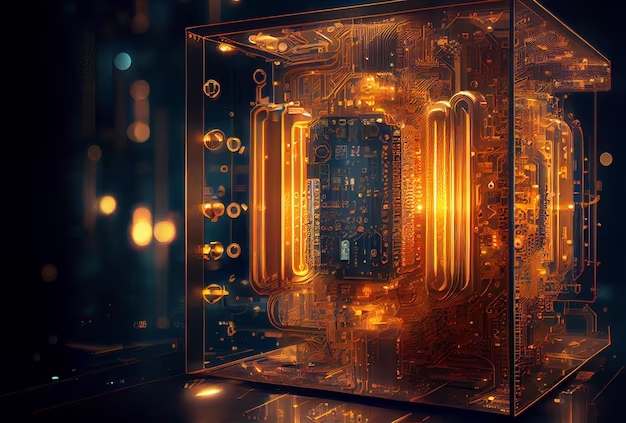Mind Matchup: Human Brain vs. Neural Networks - Bridging the Gap in Intelligence
In the realm of artificial intelligence, the relentless pursuit to replicate the astounding capabilities of the human brain has sparked a captivating exploration: the comparison between the intricate complexities of the human brain and the artificial intelligence powerhouse known as neural networks. This blog embarks on a journey to unravel the subtleties of this Mind Matchup, venturing into the profound parallels that echo through these systems, dissecting the distinctive differences that set them apart, and navigating the ongoing endeavours aimed at narrowing the intelligence gap between our biological marvel and its synthetic emulation. As we delve deeper into this intriguing exploration, we aim to decipher the intricacies that define both the organic brilliance of the human mind and the artificial ingenuity of neural networks.
The Human Brain: Nature's Masterpiece
The human brain stands as nature's unparalleled masterpiece, an intricate biological marvel that encapsulates the essence of human cognition. Comprising an astounding network of approximately 86 billion neurons intricately interconnected by trillions of synapses, it serves as the epicentre of our thoughts, emotions, and actions. This intricate neural network orchestrates the symphony of our daily experiences, seamlessly processing information, forming memories, and generating responses. Its unparalleled learning and adaptation capabilities have spurred awe and fascination, prompting researchers and scientists to delve deep into the labyrinth of its intricacies.
The complexity of the human brain has been a wellspring of inspiration for the field of artificial intelligence. As we seek to comprehend the mechanisms behind its remarkable abilities, we draw insights that drive the creation of sophisticated artificial intelligence models. From pattern recognition to decision-making, the human brain's multifaceted functions provide a rich tapestry of cognitive processes that researchers aspire to emulate in the development of neural networks and AI algorithms. In essence, the human brain not only defines our individual experiences but also serves as the guiding beacon in our quest to engineer intelligent systems that approach the brilliance of nature's own design.
Neural Networks: The Technological Mimicry
Neural networks, often hailed as the technological mimicry of the brain, stand as the cornerstone of modern artificial intelligence. These intricate structures are meticulously designed to emulate the fundamental architecture and functioning of the human brain. In their essence, neural networks are artificial constructs inspired by the complex interplay of neurons and synapses observed in biological organisms. As the backbone of machine learning algorithms, these networks aspire to capture the essence of the brain's extraordinary capabilities.
These artificial counterparts, comprised of interconnected nodes that resemble neurons, process information through a series of weighted connections—paralleling the synaptic connections found in the brain. Just as neurons in the human brain communicate through electrical signals, artificial neurons transmit and process data through mathematical computations. The strength of these connections is dynamically adjusted during the learning phase, a process analogous to the synaptic plasticity observed in the brain, enabling the network to adapt and improve its performance over time.
While neural networks share fundamental similarities with the brain, it is in their nuanced differences that the true potential of artificial intelligence emerges. Unlike the biological constraints of the human brain, neural networks can be scaled, specialized, and optimized for specific tasks. The ability to fine-tune parameters, adjust architectures, and process vast amounts of data at incredible speeds unlocks a realm of possibilities beyond the biological limitations of our minds.
Understanding these divergences becomes pivotal in deciphering the true potential of artificial intelligence. It is through this delicate balance of mimicry and innovation that neural networks strive to push the boundaries of what machines can achieve. The journey to unravelling the full spectrum of artificial intelligence capabilities lies in navigating these intricate differences and leveraging them to create systems that not only mirror the brain's functionalities but also transcend them in certain aspects.
Similarities Explored:
Neurons as Units: In both the human brain and neural networks, neurons serve as fundamental units. Human neurons transmit signals through synapses, orchestrating cognition. Artificial neurons in neural networks process information through weighted connections. The adaptability of artificial neurons allows tailored adjustments for specific tasks, providing a flexible counterpart to the biological intricacies.
Learning and Adaptation: Both the brain and neural networks share the ability to learn from experiences. The brain strengthens synaptic connections through repeated activities, shaping memory. Neural networks optimize performance by adjusting weights during training on datasets, showcasing adaptability. The parallel essence of learning underscores the dynamic intelligence inherent in both natural and artificial systems.
Points of Divergence:
- Parallel Processing vs. Sequential Logic: The brain excels at parallel processing, handling multiple tasks simultaneously. Neural networks, historically more sequential, are evolving with parallel computing architectures to narrow this gap.
Conclusion: Towards a Unified Intelligence
In the Mind Matchup of Human Brain vs. Neural Networks, we witness a fascinating interplay of biology and technology. While we've made strides in replicating certain aspects, the full complexity of the human mind remains a challenge. As innovation continues, the synergy of insights from neuroscience and technological breakthroughs promises a future where artificial intelligence and human intelligence converge, unlocking new dimensions of understanding and possibility. The journey to unified intelligence is as thrilling as the destination





Comments
Post a Comment